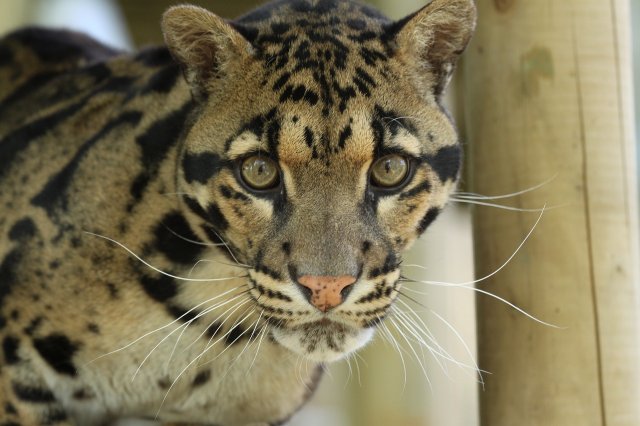7 Special Traits That Define Clouded Leopards
Define Clouded Leopards
Clouded leopards are one of the most fascinating and elusive big cats in the world. With their unique physical characteristics and behavior, they have captured the attention of researchers and wildlife enthusiasts alike. In this article, we will explore seven special traits that define clouded leopards, shedding light on their remarkable adaptations and ecological significance.
1. Elusive and Mysterious
Clouded leopards are known for their secretive nature, making them difficult to study in the wild. They inhabit dense forests and are primarily nocturnal, which further adds to their elusiveness. Their elusive behavior has made it challenging for researchers to gather comprehensive data on their population size and distribution.
Despite their elusive nature, clouded leopards have been the subject of various research projects aimed at understanding their behavior, ecology, and conservation needs. These studies have provided valuable insights into their unique traits and the challenges they face in the wild.
2. Arboreal Adaptations
Unlike other big cats, clouded leopards have exceptional arboreal adaptations that allow them to thrive in the treetops. Their long and muscular tails provide balance and stability while navigating through the branches. Additionally, their large paws and sharp claws enable them to grip tree trunks and climb with ease.
These arboreal adaptations give clouded leopards a distinct advantage in their habitat. They can move swiftly and silently through the trees, making them highly efficient predators. Their ability to climb trees also provides them with a safe refuge from larger predators and helps them access prey that inhabits the canopy.
3. Unique Physical Features
Clouded leopards possess several unique physical features that set them apart from other big cats. One of their most striking characteristics is their cloud-like coat pattern, which provides excellent camouflage in their forested habitats. This pattern varies among individuals, making each clouded leopard’s coat unique.
Another distinctive feature of clouded leopards is their large, rounded paws. These paws act as natural snowshoes, distributing their weight evenly and allowing them to move effortlessly across various terrains, including soft forest floors and snowy landscapes.
4. Exceptional Hunting Skills
Clouded leopards are highly skilled hunters, capable of taking down prey larger than themselves. They have a diverse diet that includes small mammals, birds, reptiles, and even primates. Their strong jaws and sharp teeth enable them to deliver a powerful bite, swiftly dispatching their prey.
One of the unique hunting techniques employed by clouded leopards is their ability to hang upside down from tree branches and pounce on unsuspecting prey below. This behavior, known as “arboreal ambush hunting,” showcases their agility and adaptability in capturing prey in their arboreal habitat.
5. Vocalizations and Communication
Clouded leopards communicate through a range of vocalizations, including growls, hisses, and purrs. These vocalizations play a crucial role in establishing territories, attracting mates, and communicating with their young. They also use scent marking to communicate their presence to other individuals.
Research has shown that clouded leopards have a wide repertoire of vocalizations, each serving a specific purpose. For example, males produce loud, deep calls to announce their presence and deter potential rivals, while females use softer calls to communicate with their cubs.
6. Endangered Status and Conservation Efforts
Clouded leopards are listed as a vulnerable species by the International Union for Conservation of Nature (IUCN). Their populations are declining due to habitat loss, poaching, and illegal wildlife trade. The destruction of their forest habitats for agriculture and logging poses a significant threat to their survival.
Conservation organizations and governments are working together to protect clouded leopards and their habitats. Efforts include establishing protected areas, implementing anti-poaching measures, and raising awareness about the importance of conserving these magnificent creatures.
7. Ecological Significance
Clouded leopards play a vital role in maintaining the ecological balance of their habitats. As top predators, they help regulate prey populations, preventing overgrazing and maintaining healthy ecosystems. Their arboreal lifestyle also contributes to seed dispersal, as they inadvertently transport seeds from the fruits they consume.
Furthermore, clouded leopards serve as flagship species for conservation efforts in their range countries. By protecting their habitats, we can safeguard the diverse array of species that share these ecosystems, ensuring their long-term survival.
Summary
Clouded leopards possess a unique set of traits that define their species. Their elusive nature, arboreal adaptations, exceptional hunting skills, and distinctive physical features make them truly remarkable creatures. However, their endangered status highlights the urgent need for conservation efforts to protect these magnificent big cats and their habitats. By understanding and appreciating the special traits that define clouded leopards, we can work towards ensuring their survival for generations to come.
Read More About Clouded Leopards From Wikipedia





